The necessary household skills of how to raise the fire crane flower how to raise the fire crane flower well
Flamingo flowers originated in Costa Rica, Colombia and other tropical rain forest areas, often attached to trees, sometimes attached to rocks or directly grow on the ground, sexually like warm, humid, semi-shady environment, avoid direct sunlight. So, what problems should be paid attention to in raising flamingo flowers in home life?
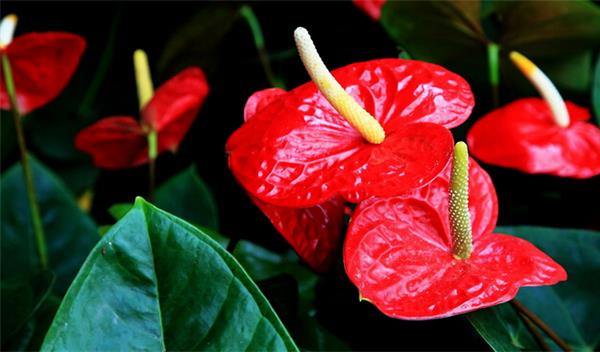
How to cultivate flamingo flowers:
Flamingo is more like wet, humid environment, cultivation substrate must be water, fertilizer, permeability, pH between 5.5~6.5 is appropriate. Because there are data showing that too high pH value will reduce the absorption of iron, manganese, zinc, etc., resulting in yellow leaves; and too low pH value, calcium, magnesium supply reduced, will increase the solubility of some trace elements, resulting in increased concentrations of some trace elements caused by mildew. We usually use pearlite and peat (ratio 1:4).
How to choose the flower pot of flamingo flower:
Flamingo is a fleshy root, sensitive to light, so generally choose a flower pot with low transmittance and many ventilation holes at the bottom. So peat pots, black plastic pots, etc. are better. However, it is best not to choose a plastic basin with light night color, and it is best not to use glass flower pots.
How to control the temperature of the fire:
The suitable temperature for flamingo growth is 18℃~30℃. If entering the flower bud differentiation period, it is necessary to reduce the average temperature and reduce the temperature difference between day and night, which can ensure the normal differentiation of flower buds and effectively prevent excessive growth. In winter, when the temperature is not lower than 15 ℃. Humidity control is mainly related to moisture management. Generally speaking, the moisture that affects the growth and development of flamingos is mainly substrate humidity and air humidity. The humidity of the substrate will burn the leaves, and the moisture content will be too much. The substrate will be too wet for a long time, which will cause the root system of the flamingo to rot and suffocate. Reasonable regulation is important. It should be noted that the number of watering times in winter should be reduced, and the fertilizer should be irrigated in the morning. Keep the leaves dry. Flamingos require higher air humidity to grow and grow faster at high humidity than at low humidity. When flamingos grow most vigorously, the relative humidity of the air is required to be 50%~80%.
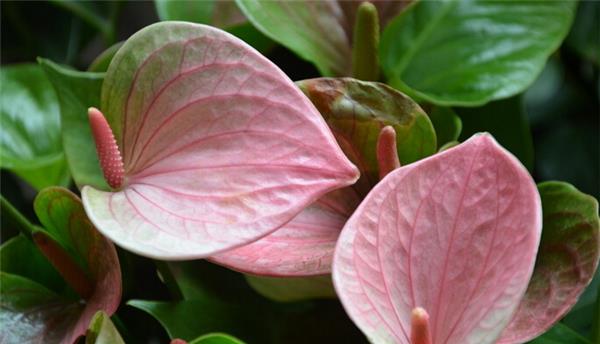
How to adjust the lighting of flamingo flowers:
Flamingo is a shade-loving plant, but it cannot be without light, so when placing potted flamingos, pay attention to placing them in a place where direct light is not available. If entering the open stage, in order to prevent flower bud discoloration or burns, it is necessary to shade, evening or rainy days do not need shading.
How to manage the fire:
Flamingos need a lot of nutrients to grow properly. And trace elements iron, copper, manganese, zinc and so on. However, flamingo leaves have waxy appearance, do not absorb nutrients, so the root fertilization, follow the "thin fertilizer and frequent application" principle. When fertilizing, attention should be paid to increasing the amount of nitrogen fertilizer in the peak season of plant growth; phosphorus fertilizer and potassium fertilizer should be applied in late autumn and early winter to facilitate cold resistance of plants; fertilizer and water should be controlled in winter to survive safely. In addition, immediately after applying liquid fertilizer, spray water on the leaves of the plants to wash the leaves to prevent burning the leaves.
How do you manage fire?:
Diseases mainly include leaf spot, anthracnose, root rot, and flamingo common pests are red spider, aphid. Mainly by controlling temperature, regulating moisture, to prevent drugs. The most important thing is to observe in time, prevent in time, and remove pests and branches in time.
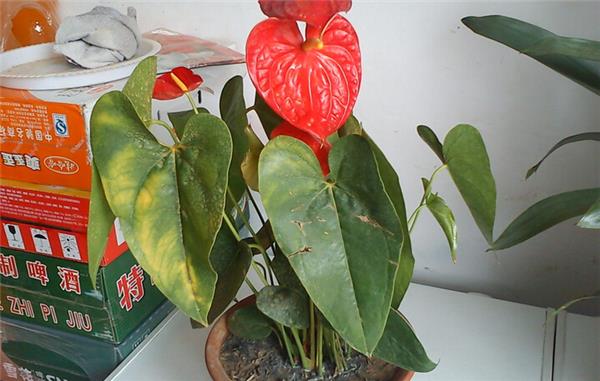
Flamingo flowers are colorful and often used in places such as home living rooms for decoration, which makes the hall unusually magnificent and luxurious. Flamingo flowers need to pay attention to avoid pests and diseases in breeding. Below we will find out what common diseases and solutions of flamingo flowers are.
Flamingo disease:
Flamingo flower disease: 1. Red spider
Flamingo flowers are prone to red spider pests. Solution: spray with 50% Marathon EC 1500 times.
Flamingo flower disease: 2. Scale insect
Scale shell insects are often characterized by activities in the back of the leaf, serious damage is easy to induce a layer of black mold on the leaf surface, touch more sticky, gently wipe off difficult. Solution: Dissolve a little washing powder in water, gently wipe the leaves and leaves with a soft cloth, wipe them off and wipe them again with water to avoid washing powder residue on the leaves.
Flamingo flower disease: 3. thrips
Thrips insects are slender yellow insects, climbing quickly, often attacking young pedicels, leaf stalks, spatholes, damaged by it after the leaves are red, leaf stalks, pedicels are not smooth, uneven, spatholes are abnormal flowers. Solution: Give flamingos 600-800 times more Confudo.
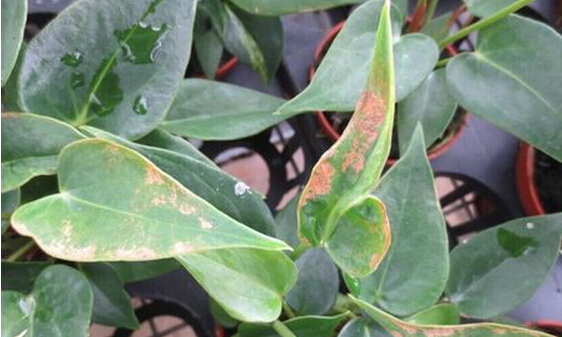
Flamingo flower diseases: 4. Anthracnose, leaf spot and inflorescence rot
Anthracnose, leaf spot and inflorescence rot are common hazards of flamingo flower. Solution: spray 500 times solution of Bordeaux mixture or 65% Zinc-Dezeb WP, and it is best to hit 750 times solution of carbendazim or chlorothalonil every 7-10 days during maintenance.
There are about 200 kinds of flamingo plants, of which about 20 kinds are of ornamental value. Common are: large leaf candle, crystal candle, sword leaf candle. So, what is the common classification of flamingos?
According to different viewing purposes, it can be divided into three categories.
The first group is cut flowers with erect fleshy spikes, represented by flamingo;
The second type is potted flowers with curved inflorescence, represented by flower candle.
The third category is wide heart-shaped leaves, dark green luster, veins thick, silver-white, with a beautiful pattern of leaves, represented by crystalline candles. Cultivated widely, more varieties are cut flowers.
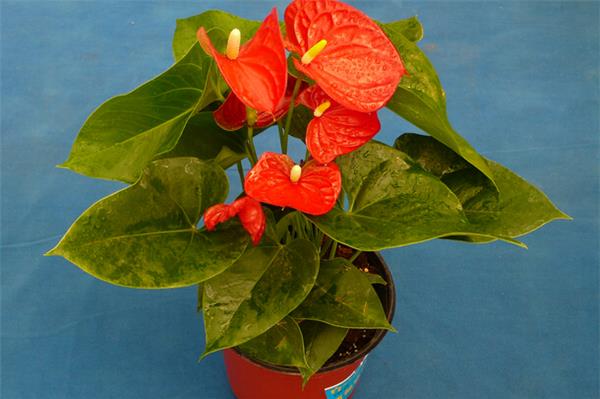
According to the color of buddha and fleshy inflorescence, cut flower varieties are as follows:
1. Gloria, Alexia: bright red spathe, yellow inflorescences;
2. Mauricia, Candia: spathe is bright red, the apex of sphaerotheca is green;
3. Rosetta, Nette: spathe scarlet, spike apex green;
4, Lydia: Buddha flame bud scarlet, flesh ear inflorescence all pink;
5. Margaretha: white spathe, red flesh inflorescence.
The above is a small series for everyone to share some flamingo flowers pictures and some flamingo flower cultivation methods, I hope useful to you!
Flamingo flower diseases: 4. Anthracnose, leaf spot and inflorescence rot
Anthracnose, leaf spot and inflorescence rot are common hazards of flamingo flower. Solution: spray 500 times solution of Bordeaux mixture or 65% Zinc-Dezeb WP, and it is best to hit 750 times solution of carbendazim or chlorothalonil every 7-10 days during maintenance.
There are about 200 kinds of flamingo plants, of which about 20 kinds are of ornamental value. Common are: large leaf candle, crystal candle, sword leaf candle. So, what is the common classification of flamingos?
According to different viewing purposes, it can be divided into three categories.
The first group is cut flowers with erect fleshy spikes, represented by flamingo;
The second type is potted flowers with curved inflorescence, represented by flower candle.
The third category is wide heart-shaped leaves, dark green luster, veins thick, silver-white, with a beautiful pattern of leaves, represented by crystalline candles. Cultivated widely, more varieties are cut flowers.

According to the color of buddha and fleshy inflorescence, cut flower varieties are as follows:
1. Gloria, Alexia: bright red spathe, yellow inflorescences;
2. Mauricia, Candia: spathe is bright red, the apex of sphaerotheca is green;
3. Rosetta, Nette: spathe scarlet, spike apex green;
4, Lydia: Buddha flame bud scarlet, flesh ear inflorescence all pink;
5. Margaretha: white spathe, red flesh inflorescence.
The above is a small series for everyone to share some flamingo flowers pictures and some flamingo flower cultivation methods, I hope useful to you!
- Prev

The editor introduces the breeding methods and matters needing attention of Jasper.
The editor introduces the breeding methods and matters needing attention of Jasper.
- Next

The editor teaches you to easily solve the problem of smooth sailing and yellowing of leaves.
The editor teaches you to easily solve the problem of smooth sailing and yellowing of leaves.
Related
- Wuhan Hospital Iron Tree Blooming Result Was Instantly Frightened by the Gardener Master
- Which variety of camellia is the most fragrant and best? Which one do you like best?
- What is the small blue coat, the breeding methods and matters needing attention of the succulent plant
- Dormancy time and maintenance management of succulent plants during dormancy
- Minas succulent how to raise, Minas succulent plant pictures
- What are the varieties of winter succulent plants
- How to raise succulent plants in twelve rolls? let's take a look at some experience of breeding twelve rolls.
- Attention should be paid to water control for succulent plants during dormant period (winter and summer)
- Watering experience of twelve rolls of succulent plants
- Techniques for fertilizing succulent plants. An article will let you know how to fertilize succulent plants.

